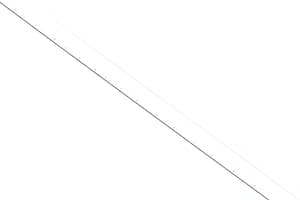Podcast
Questions and Answers
What is a transversal?
What is a transversal?
- A type of angle
- A parallel line
- A type of triangle
- A line passing through two or more lines (correct)
Which angles are formed when a transversal crosses two parallel lines?
Which angles are formed when a transversal crosses two parallel lines?
- Corresponding angles (correct)
- Adjacent angles
- Reflex angles
- Vertical angles
Adjacent angles are always equal.
Adjacent angles are always equal.
False (B)
What do we write to indicate that line AB is parallel to line CD?
What do we write to indicate that line AB is parallel to line CD?
What is true about cointerior angles formed by a transversal crossing two parallel lines?
What is true about cointerior angles formed by a transversal crossing two parallel lines?
What do adjacent angles on a straight line add up to?
What do adjacent angles on a straight line add up to?
Vertically opposite angles are always equal.
Vertically opposite angles are always equal.
What is the total measure of angles in a revolution?
What is the total measure of angles in a revolution?
What type of angle is formed by perpendicular lines?
What type of angle is formed by perpendicular lines?
What is a transversal?
What is a transversal?
Corresponding angles are always equal when formed by a transversal crossing parallel lines.
Corresponding angles are always equal when formed by a transversal crossing parallel lines.
Vertically opposite angles formed by two intersecting lines are unequal.
Vertically opposite angles formed by two intersecting lines are unequal.
What do cointerior angles do when formed by a transversal crossing two parallel lines?
What do cointerior angles do when formed by a transversal crossing two parallel lines?
What do we write to express that line AB is parallel to line CD?
What do we write to express that line AB is parallel to line CD?
Two adjacent angles on a straight line are __________.
Two adjacent angles on a straight line are __________.
How many degrees do angles in a revolution add up to?
How many degrees do angles in a revolution add up to?
What is the measure of a right angle?
What is the measure of a right angle?
Study Notes
Transversals
- A transversal is a line that intersects two or more other lines.
- The lines intersected by the transversal do not necessarily have to be parallel.
- When a transversal crosses two lines, it forms special angle pairs: corresponding, alternate, and cointerior angles.
Identifying Parallel Lines
- Parallel lines are indicated by using the same arrow set on each line. For example, if AB is parallel to CD, this is written as AB || CD.
Angle Relationships with Parallel Lines
- Corresponding Angles are equal when the transversal crosses two parallel lines.
- Alternate Angles are equal when the transversal crosses two parallel lines.
- Cointerior Angles are supplementary (add up to 180 degrees) when the transversal crosses two parallel lines.
Adjacent Angles
- Adjacent angles share a common vertex and arm.
- Two adjacent angles on a straight line are supplementary.
Angles in a Revolution
- Angles in a complete circle (revolution) add up to 360 degrees.
Vertically Opposite Angles
- Vertically opposite angles are formed when two lines intersect.
- They are equal and share a common vertex, but are situated on opposite sides of the vertex.
Perpendicular Lines
- Perpendicular lines intersect at a right angle (90 degrees).
- This is written as AB ⊥ CD, indicating line AB is perpendicular to line CD.
Transversals
- A transversal is a line that intersects two or more lines.
- The lines intersected by a transversal don’t have to be parallel.
Angle Pairs
- A transversal creates special angle pairs.
- Corresponding angles: In the same position relative to the transversal and the two intersected lines.
- Alternate angles: On opposite sides of the transversal and inside the two intersected lines.
- Cointerior angles: On the same side of the transversal and inside the two intersected lines.
- Parallel lines, indicated with the same arrow set (e.g., AB||CD), have specific angle relationships when intersected by a transversal.
- Corresponding angles are equal.
- Alternate angles are equal.
- Cointerior angles are supplementary (add up to 180 degrees).
Other Angle Types
- Adjacent angles: They share a vertex and one arm, and sit side by side.
- Two adjacent angles on a straight line are supplementary: They add up to 180 degrees.
- Angles in a revolution: Add up to 360 degrees.
- Vertically opposite angles: Form when two lines intersect. They are equal and sit opposite each other across their common vertex.
- Perpendicular lines (ab ⊥ cd): Meet at a right angle (90 degrees).
Studying That Suits You
Use AI to generate personalized quizzes and flashcards to suit your learning preferences.
Description
This quiz covers transversals and their relationships with parallel lines, including various types of angles formed when a transversal intersects lines. Learn about corresponding, alternate, and cointerior angles, as well as parallel line indicators and adjacent angles. Test your understanding of these geometric concepts and improve your skills in angle relationships.




